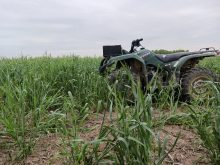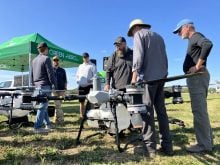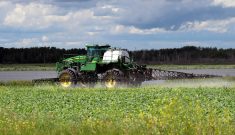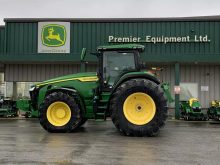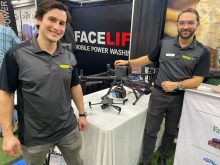Drones are quickly becoming a preferred tool for growers across the globe. Some drones offer high-concentration, small-volume spraying technology with the same efficacy of coverage as typical agricultural equipment, allowing producers to use less product.
As well, the flight ability and down-facing fan action allow growers to ensure timely applications independent of soil conditions, with moderate dependency on wind conditions.
Barrie, Ont.-based technology company Wonderfull Inc. distributes DJI Agricultural Drones and had several models on display at the Crop Stop event held at Canada’s Outdoor Farm Show site in late September.
Read Also
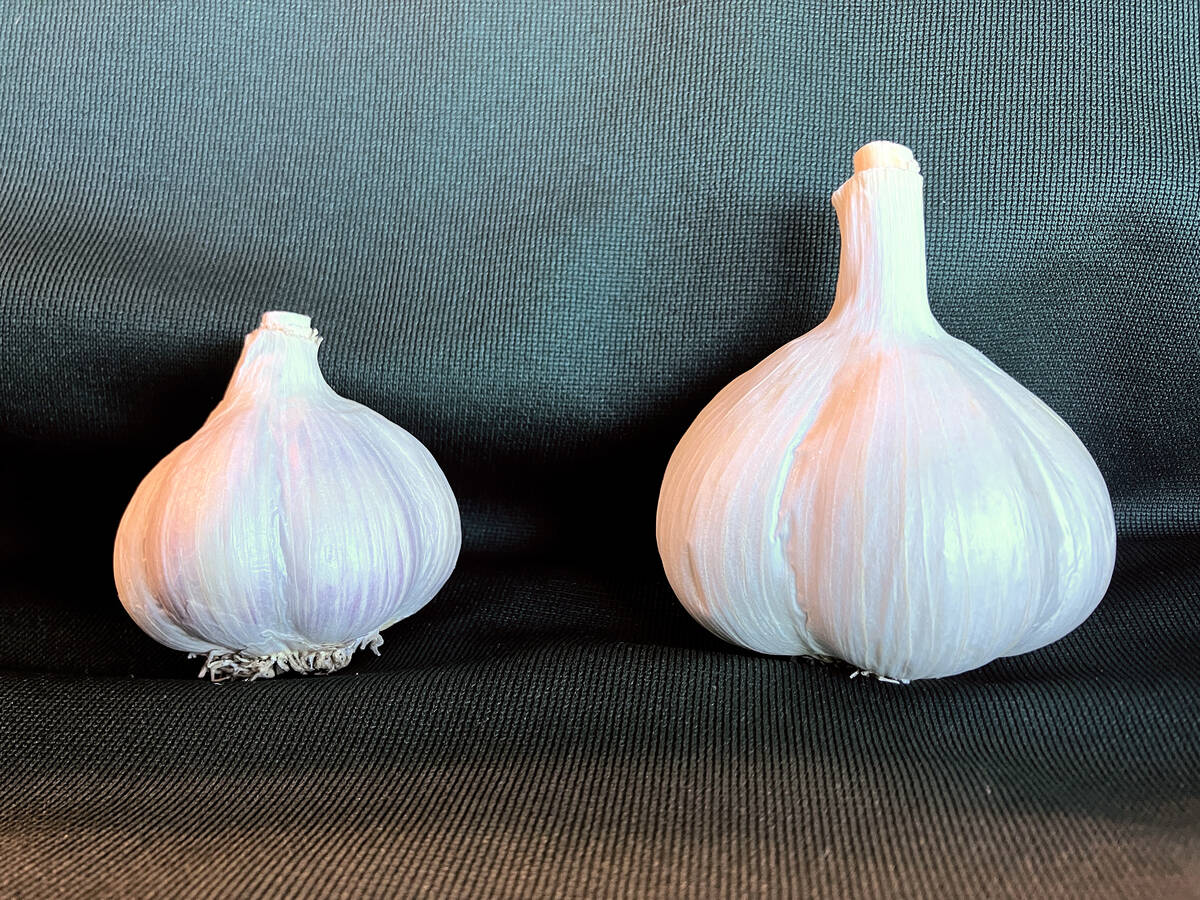
Clean seed garlic promises bigger bulbs and higher returns for growers
Ontario garlic trials show clean seed outshines conventional yields, with stronger drought resilience, reduced virus risk and greater economic outcomes.
Why it matters: Drone technology could benefit farmers with better and more efficient application of products.
The DJI Agras T20 and DJI Agras T30 have a 20- and 30-litre tank, respectively. The small tank allows growers to reduce chemical use by approximately 30 to 50 per cent compared to typical applications.
“Usually tractors are using [long booms] and the solution is coming from the middle. The pressure in the middle of the boom will be higher than the pressure at the end of the booms,” says Jenny Chen, Wonderfull’s manager.
“Also, if the sprayer is too close to the crop, it will cause overspray, and the fan-shaped edge area sprayed will not be enough dosage.”
The drone models offer two industry firsts – a four-channel electromagnetic flowmeter system, and an electromagnetic exhaust valve, which can achieve “pump-free calibration” and “one-button” automatic exhaust of air from the remote controller.
After the exhaust is successful, it will automatically shut down in milliseconds to reduce pesticide waste and improve work efficiency.
The solution comes out of the four pipes as a mist, so many producers are concerned about drift.
“Drift is everywhere no matter what kind of equipment you are using. The downward pressure wind field generated by the blades accomplishes sedimentation of the liquid from the air onto the crops. If the downward pressure wind generated by the blades is not strong enough, increasing the operating speed will reduce the operating effect,” says Chen.
As well, most drones are designed as a circle, but the DJI Agras T20 has a gem shape. She says this design, in conjunction with the propeller, has a specific size and height to generate a strong downward pressure to ensure enough coverage of the front and back surfaces of the crop.
Applying at a rate of five litres per acre, the drone can complete six acres per tank in six to seven minutes.
When spraying at four to five litres per acre, one battery can work for four to five acres.
“These batteries have 600 life cycles, meaning the battery can be recharged 600 times. The good thing with T20 is we equipped it with four batteries. That means you can continuously work in the field; you do not need to wait for recharging.”
The T20 is equipped with two water tanks, which can be swapped out directly when the drone lands and allow for two chemical tanks at one time. The T30 tank is mounted on the drone and will need to be filled each time.
Chen says on average it takes five seconds to change a battery and 15 seconds to swap the water tanks between the T20.
The T20 and T30 drones can complete 30 and 40 acres per hour, respectively. Within an eight-hour day three machines controlled by one remote can complete 720 to 960 acres at an application rate of five litres per acre.
“Six of the drones would be equivalent to the big tractors with 2,000 acres per day. With the big tractors, it is a little difficult to go to the small fields of irregular shape, but with the drone you can fly anywhere you want. It is very convenient,” says Chen.
The T20 comes with one drone, one remote controller, four batteries, two chargers, two water tanks, one spreader and one D-RTK 2 mobile station.
“The price would be about $42,800, about 10 per cent of the price of a [self-propelled sprayer].”
The T30 is equipped with a new 16-nozzle layout, a nine-metre spray range, and eight sets of solenoid valves with independent frequency conversion control.
“It is the industry’s first horizontally opposed six-cylinder double plunger pump design, providing strong power and bringing a flow rate of eight litres per minute,” says Chen.
As well, the T20 has the option to be a spreader by using a replacement spreader tank to plant cover crops and spread fertilizer.
Aaron Bowman, a Pioneer sales representative in Hampton, had a DJI drone demonstration on his farm this past fall for his customers.
Chen used water in the demonstration for Bowman, but also applied red clover into standing soybeans at 10 pounds to the acre.
Bowman says the demonstration, which covered 10 acres, took less than 20 minutes with the T20.
He says his customers were skeptical at first when they saw the drone, unsure if it would be able to perform as accurately, or ever replace, current technology.
“By the end of it all, many were saying ‘I can actually use that here or that could go there’.”
Bowman says the price is still a little high for him, but like anything, the price of technology will shrink and it will become more advantageous with bigger payloads.
“The red clover was awesome. I had no prints through my field, from that standpoint for sure. Until payloads get higher or more swarm technology, for three or four of them to run at the same time you’re not replacing airflows.”
He says there will soon be more opportunity for drones to replace sprayers.
“I think there is potential especially as we keep struggling to get sprayer operators, it could be potentially there; I just think the payload needs to be more.”
Bowman notes the advantages of the drone are its ability to apply two different products, dry or liquid, and to spray irregular fields and those that are difficult for large equipment. Another advantage is the simplicity of the system to set up and operate.
But he found the ability to counteract wind most interesting. “Coverage was very interesting. The breeze did pick up, it was amazing, with the propellers it was actually able to push down pretty good.”







